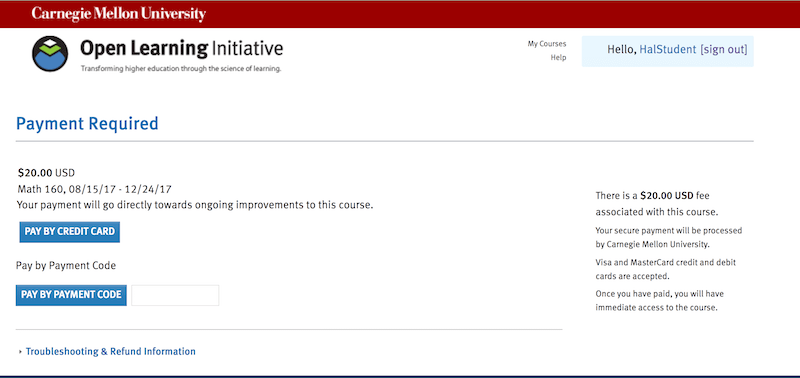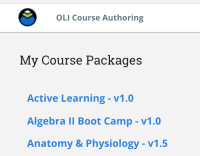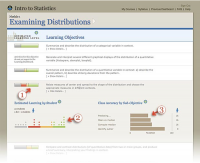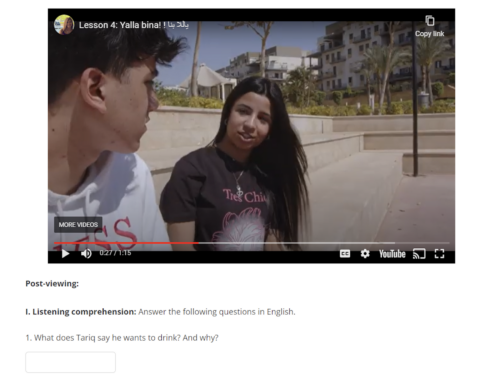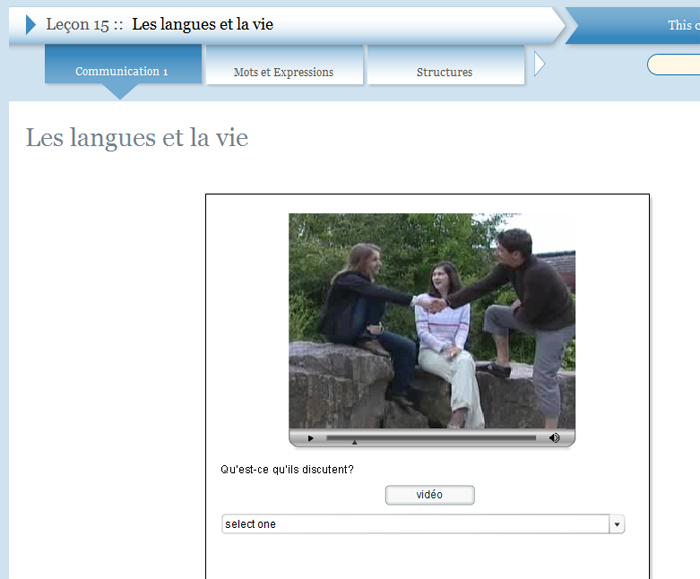First-semester course teaching the Arabic writing system, Modern Standard Arabic, the Egyptian and Levantine dialects, and Arab culture.
Arabic 1
$50
- Description
- What students will learn
- Learning objectives by module
- Course assessments, activities, and outline
- Other course details
- System requirements
- Included instructor tools
Description
Elementary Arabic 1 is designed for first-semester Arabic learners who have no background in the Arabic language and wish to learn how to read and write Modern Standard Arabic (MSA) and speak the Egyptian and/or Levantine dialects.
The course structure is designed to help motivated students read and write the Arabic language and learn about Arab culture. It consists of 2 Units that can be completed over a 14- or 15-week semester and can be adopted as a hybrid or an online course. Unit 1 consists of five themed and content-based lessons (7 weeks) that include videos on how to write the Arabic alphabet, while focusing on speaking functional Arabic and learning basic grammar. Unit 2 contains two themed and content-based lessons (8-9 weeks) that delve into more contextualized themes with readings and dialogue videos shot in Egypt with Egyptian and Syrian actors to provide an authentic background. The videos are in MSA, Egyptian, and Levantine. No additional books or materials are needed for the course.
Each lesson opens with a video that aims at teaching social interactions with a focus on the lesson’s theme. It includes audio-popup and audio-visual vocabulary, Quizlets, storytelling videos, listening, speaking and writing exercises (Multiple Choice, Drag n Drop, Matching, Dictation, etc…), role plays, a writing prompt, writing and creativity, music, culture, and an assessment. All can be submitted on Torus.
What students will learn
By the end of this course, students will know how to greet, introduce themselves and others, and describe their studies, work, family, feelings, food and beverages, living spaces, visits, and hobbies.
Learning objectives by module
By the end of Lesson 1, students will be able to:
- Greet formally and informally, introduce yourself, tell where you are from, and respond to others.
- Read and write the letters ا ب ت ث و ي .
- Distinguish between the roles of the long vowels ا و ي and short vowels fatha َ, damma ُ, kasra ِ .
- Use the subject pronouns “I and you (male, female, and plural).”
- Distinguish between the different types of physical and verbal greetings in the Arab world.
- Locate the 22 Arab countries on the map.
By the end of Lesson 2, students will be able to:
- Ask and respond to “How are you?”
- Read and write the letters ج ح خ د ذ ر ز
- Count numbers 0-10
- Become familiar with the significance of the cultural expressions that use the word “God” and the expressions that use numbers.
By the end of Lesson 3, students will be able to:
- Say that you are a student and where you study
- Express your likes and what you like to drink
- Read and write the letters س ش ص ض ط ظ
- Count numbers 11-20
- Learn about meals and visit etiquette.
By the end of Lesson 4, you will be able to:
- Express feelings and preferences
- Read and write the letters ع غ ف ق ك
- Count numbers 20-100
- Learn the effects of the short vowels shadda and sukuun on letters
- Culture: Appreciate the aspects of diversity in the Arab world
By the end of Lesson 5, you will be able to:
- Tell your age
- Express possibility and obligation
- Read and write the letters ل م ن هـ
- Learn the sound of tanween ً ٍ ٌ – taa’ marbouta ة and feminine marker – hamza ء – alif madda آ
- Use the subject pronouns: he, she, they
- Use possessive pronouns
- Distinguish between the different expressions with “Allah” (cont’d)
By the end of Lesson 6, you will be able to:
- Use vocabulary related to school and work
- Distinguish between definite and indefinite nouns الإسم المُعَرَّف و الإسم النكرة
- Use present tense conjugation الفعل المضارع and its negation: Live, Work, Speak, Study, Want
- Ask questions using different interrogative pronouns السؤال
- Use adjectives الصفة, including ones with إضافة,
- Compare conversations in MSA and dialect,
- Appreciate the importance of high school national exams in college placement.
By the end of Lesson 7, you will be able to:
- Use vocabulary on daily activities and hobbies
-
- Use a variety of adverb
- Use the particle أن
- Construct an إضافة
- Revisit possessive Pronouns ضمائر الملكية
- Use days of the week أيام الأسبوع
- Form masculine plurals: regular and irregular جمع المذكَّر و جمع التكسير
- Revisit interrogative pronouns الأسئلة
- Appreciate the role of social & sports clubs النادي.
Course assessments, activities, and outline
Listed under “Description” above.
Other course details
System requirements
OLI system requirements, regardless of course:
- internet access
- an operating system that supports the latest browser update
- the latest browser update (Chrome recommended; Firefox, Safari supported; Edge and Internet Explorer are supported but not recommended)
- pop-ups enabled
- cookies enabled
Some courses include exercises with exceptions to these requirements, such as technology that cannot be used on mobile devices.
This course’s system requirements:
- If the student is working with an instructor in a distance-learning situation, chat environment and videoconferencing software.
Included instructor tools
Instructors who teach with OLI courses benefit from a suite of free tools, technologies, and pedagogical approaches. Together they equip teachers with insights into real-time student learning states; they provide more effective instruction in less time; and they’ve been proven to boost student success.



